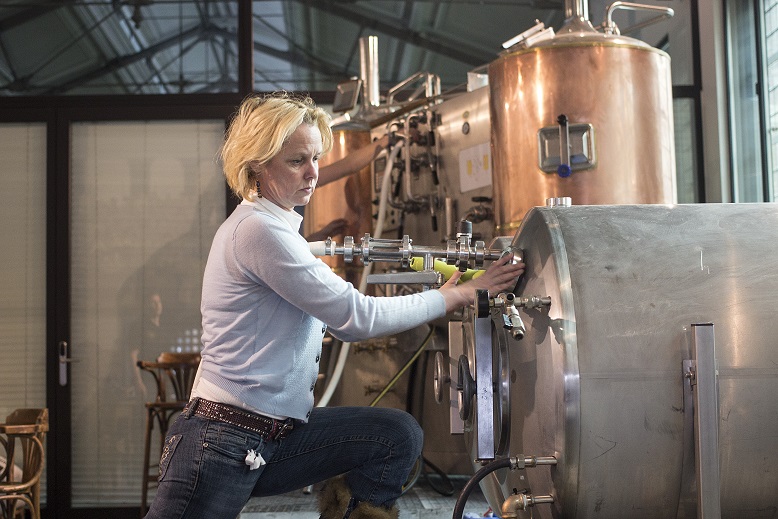If most advertising campaigns are to be believed, beer is the preserve of men. The target audience of most alcoholic beverages are predominantly male but in fact, beer brewing especially was originally an activity carried out by women in several ancient civilisations.
Today, more and more female brewers are rising to prominence, particularly in Belgium.
Despite its modern association with masculinity, the process of making beer was actually invented by women around the fourth millennium BC in Mesopotamia. Brewing was even an activity dedicated to women in Sumerian mythology.
There was also a goddess of beer, Ninkasi. In Egypt too the deity related to this beverage was female: Menqèt. At that time, beer was brewed with barley, wheat and dates to be used for fermentation.
It became popularised in Europe among the Germans and Celts, while the Roman Empire despised beer in favour of wine.
Around the third and fourth centuries, in the Scandinavian countries, Norse law indicated that Viking women were responsible for brewing.
The incorporation of hops in cervoise, the ancestor of beer, would also be attributed to a woman, Hildegard von Bingen.
Previously, beer was flavoured with gruit, a blend of herbs and spices.So why did brewing beer become synonymous with men?
Related News
- Carbon dioxide shortage threatens EU beer and food industries
- Fifteen Belgian beers among medallists at Beer World Cup
- Meet the women on a mission to save craft beer in Belgium
The change is attributed to two main causes.The first is the expansion of monasteries. According to the Order of St. Benedict, monks must produce their own clothes, drink and food. They then began brewing beer, a beverage less risky to health than river water.
In the thirteenth century, the Church definitively distanced women from the manufacture of beer, stating that such ‘unclean beings’ must be removed from participating in this activity.
The Black Death, which killed millions of people and decimated the European population in the fourteenth century, caused a lack of labourers which consequently pushed wages up and led to increased beer consumption.
Brewing then became a lucrative commercial activity, taken over by men. The presence of a woman in a brewery was even thought to bring bad luck.
Nevertheless, attitudes have evolved, both on the side of producers and consumers. The most striking proof of the change in mentalities came in 2013 when the Orval brewery appointed a woman as its master brewer. She thus became the first female brewer of a Trappist beer.
Totem, Atrium, and the Brasserie de la Lienne are Belgian examples of a re-feminisation of the brewing profession.
Mélissa Résimont is co-manager of the Brasserie de la Lienne with her brother and is in charge of the brewing part. The Brasserie de la Lienne is located near Lierneux in the province of Liège and since 2013, Mélissa holds a master's degree in biology of organisms and ecology and a brewer's certificate obtained at the Walloon institute for small-to-medium sized enterprises IFAPME.
She brews classic beers; blonde, brown, and black, but also an old brunette, and The Goat, a golden blonde beer aged for four months in barrels of Belgian Owl, the famous Liège whisky considered by many specialists as one of the best in Europe.
One month ago, the European meeting of the association took place on the side-lines of the BXL Beer festival, and it aroused a lot of interest. The future of beer brewing will continue to have a female flavour.

